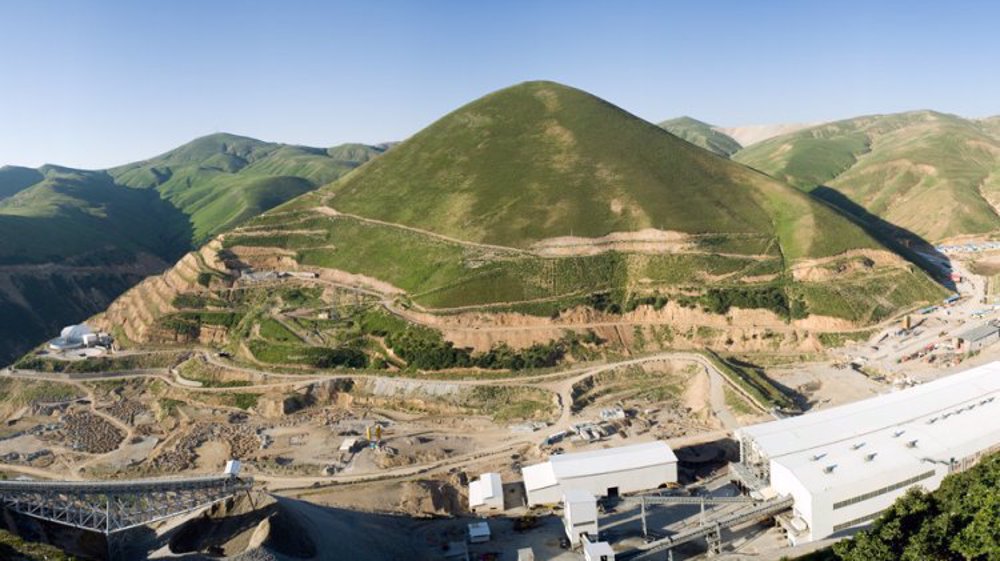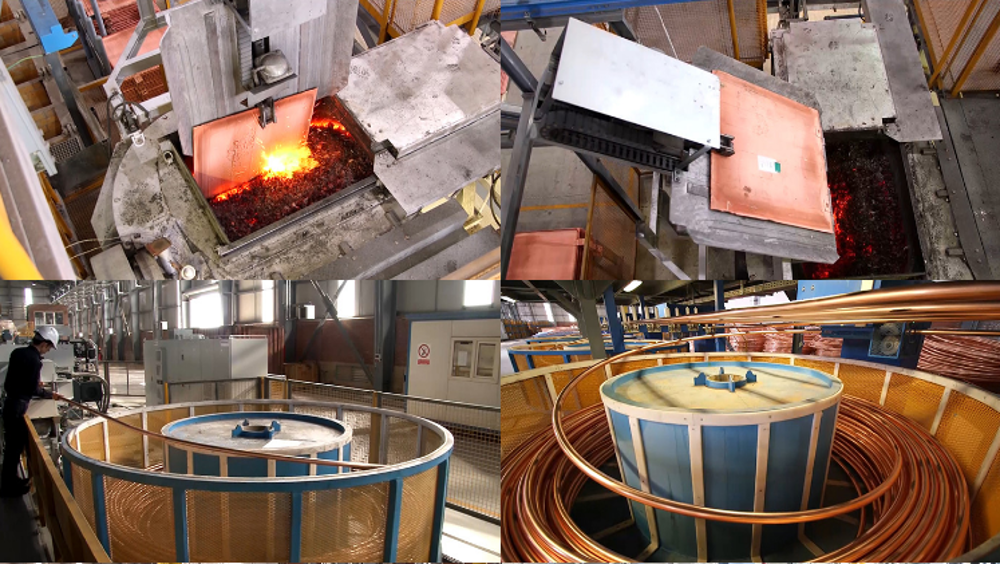Minister: Iran to invest $15 billion on copper production
Iran plans $15 billion of investment to boost its copper production in the next five years, that will increase exports of the strategic metal to more than $10 billion from the current $1.7 billion, Minister of Industry, Mining and Trade Reza Fatemi-Amin says.
The country is currently producing 280,000 tonnes of copper cathode a year, which it wants to increase to over one million tonnes, he said.
“In order to achieve this goal, the program to increase production by 750,000 tonnes started this summer, which requires $15 billion of investment, he said, adding the projects will gradually come on stream by the Iranian year of 1406.
New explorations have started in South Khorasan province in eastern Iran and are being undertaken in other provinces.
Iran, having 1% of the world's population, has more than 6% of the world's copper reserves.
“With the discoveries made so far, we have ranked fifth in the world, and with the continuation of the exploration work, this rank will also improve,” Fatemi-Amin said.
The National Iranian Copper Industry Company (NICICO) operates the country’s three major copper mines of Sarcheshmeh, Sungun and Miduk which have combined reserves of 3.4 billion tonnes.
The Sarcheshmeh copper mine in the southeast Kerman province is the world's second largest. It holds over 826 million tonnes of proven and 1.2 billion tonnes of estimated reserves alongside substantial amounts of other minerals including molybdenum, gold, silver and rare metals.
The Sungun mine in East Azarbaijan province is Iran’s second largest copper operation with over 470 million tonnes of proven and 1 billion tonnes of potential reserves. The third major copper mine is Miduk in Kerman, that holds 170 million tonnes of proven copper reserves.
Iran is ranked among 15 major mineral-rich countries, holding some 68 types of minerals, even though the country’s mineral potential is not fully mapped.
The country has about 37 billion tonnes of proven mineral reserves and 57 billion tonnes of potential reserves, worth $800 billion according to 2014 data on state-owned mines and metal holding company IMIDRO’s website.
Iran’s proven oil and gas reserves are the world’s fourth and first largest respectively. But with its oil industry under a strict sanctions regime which has cut revenues, the country is beginning to take stock of its other resources and mining is emerging as a new field which Iran can count on for revenue generation.
The sector holds a key advantage over the oil industry: it is much harder to sanction the mining industry because of its immense diversity. From extremely sensitive radioactive materials to such ordinary substances as lime, the sector includes as many as 120 elements.
Iran is a leading producer of steel in the world, with officials saying exports continue despite the US sanctions. It plans to raise steel output to 55 million tonnes a year by 2025, of which 20 to 25 million tonnes would be earmarked for export.
The pivotal role of the manufacturing sector in Iran’s economic resilience has not escaped the attention of US administrations. Washington has imposed sanctions targeting Iran’s construction, manufacturing, textiles, mining, aluminum, copper, iron and steel industries.
The coercive measures affect the private sector and millions of blue-collar workers in Iranian factories, disproving the US government’s claim that the sanctions target the state and not ordinary people.
UK ‘preemptively’ discharges pro-Palestine hunger strikers recovering in hospital
US dollar falls in Iran amid rising export currency supply
Trump’s ‘Board of Peace’ for Gaza an extension of Israeli occupation: Ex-UN rights chief
IMF expects Iran’s economy to grow by 1.1% in 2026
Over 9,350 Palestinians held in Israeli prisons as of early January: Rights groups
VIDEO | Press TV's news headlines
Israel plans to seize Palestinian-owned land in occupied East al-Quds
VIDEO | Displacement in Al-Ouja: A broader push to reshape the occupied West Bank











 This makes it easy to access the Press TV website
This makes it easy to access the Press TV website